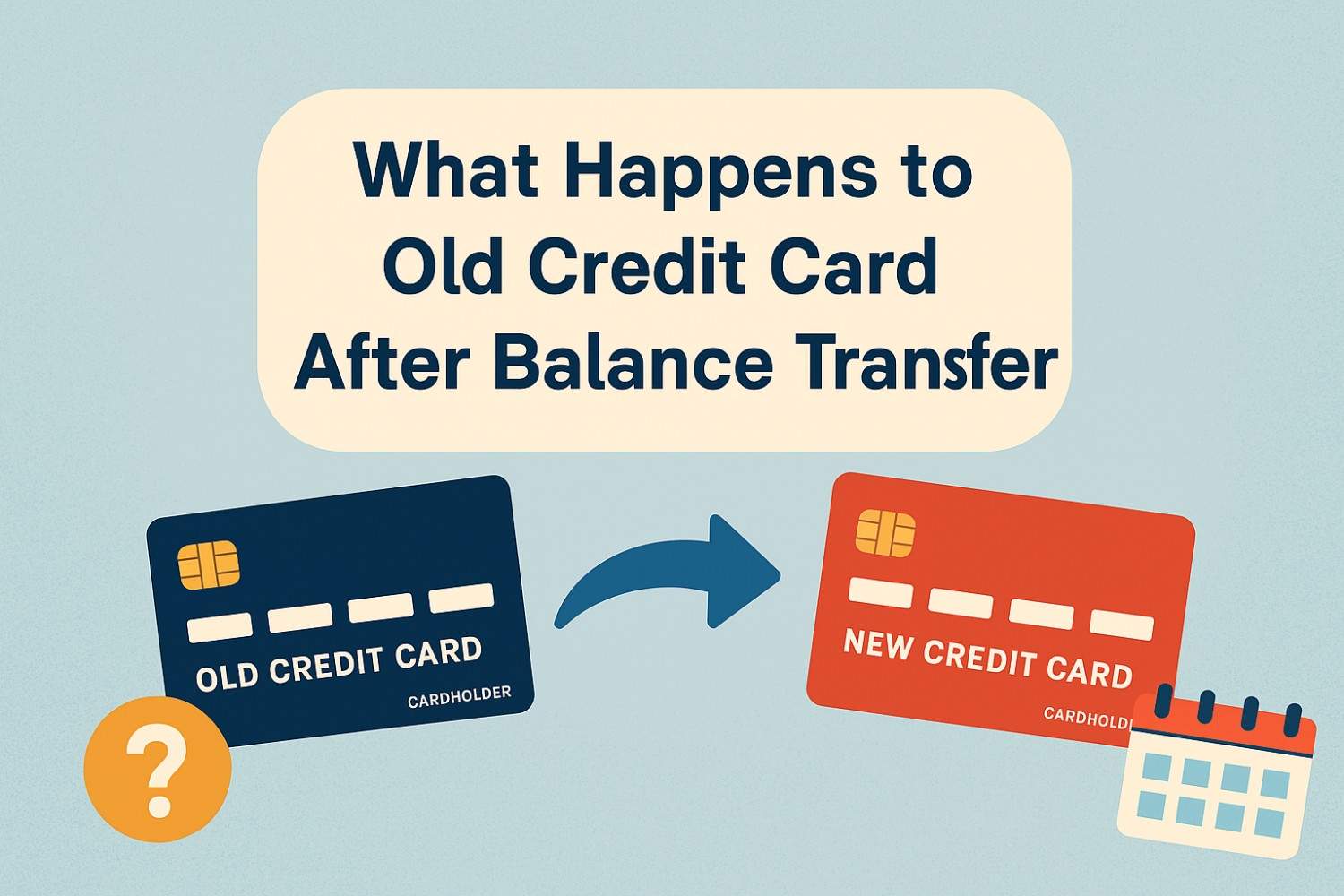If you’ve ever wondered what happens to old credit card after balance transfer, you’re not alone. When I first transferred a balance to take advantage of a 0% intro APR offer, I assumed the old card would automatically close itself. Spoiler: it didn’t. The account stayed open—with a $0 balance—and a few weeks later, a tiny “interest adjustment” appeared on my next statement. That experience taught me that a balance transfer doesn’t wipe the slate clean—it simply moves your debt.
Understanding what actually happens to your old credit card after a balance transfer is important because it can affect your credit score, account history, and even your financial organization. Below, we’ll break down exactly what goes on behind the scenes, what you should (and shouldn’t) do afterward, and how to protect your credit from small but costly mistakes.
What actually happens to the old card right after the transfer?
When the issuer moves your balance to the new promo-APR card, your new card becomes the one you pay. Your old card’s balance drops by the transfer amount; if anything remains (fees, new purchases, or interest), it continues to accrue interest on the old card until paid off. The old account does not close automatically.

Watch for “residual” (trailing) interest
Even when the statement shows $0, daily interest can accrue between statement close and the date your payoff posts—showing up on the next statement as a small surprise balance. That’s called residual (trailing) interest.
Should you close the old card or keep it open?
Closing isn’t required, and often not ideal. Shutting an account can raise your utilization (less available credit) and potentially ding scores; many experts suggest leaving the old card open—especially if it’s one of your oldest lines.

When closing might still make sense
If the card carries a high annual fee you don’t use, consider product changing (downgrading) to a no-fee version with the same issuer to preserve account age and limit without the cost.
What happens to rewards, autopays, and fees?
- Rewards: Points or cash back earned on the old card generally live with that issuer. If you close the account before redeeming or moving them (where allowed), you could lose value. Check program rules first.
- Autopays & subscriptions: Your Netflix, utilities, and app stores won’t follow you. Move recurring charges to the new card and let one extra statement cycle pass to catch stragglers.
- Balance transfer fees: Most transfers charge 3%–5% on the new card. That fee doesn’t sit on the old account. Factor it into your payoff plan.
How does keeping or closing the old card affect credit?
Opening a new card can cause a small, temporary dip from the hard inquiry and lower your average age of accounts. Over time, having more available credit (old + new) can lower utilization, a positive for scores—assuming you don’t rack up new balances. Closing the old card removes that limit and may push utilization up.

What if the bank closes the old card for inactivity?
Issuers can close dormant accounts (often after 6–24 months of no use). A sudden closure may impact utilization and potentially credit history length. Use the card for a small bill occasionally—or ask about reopening promptly if it’s closed.
Frequently Asked Questions
1. Will my old card close automatically after a balance transfer?
No. Balance transfers don’t close accounts by default. You must request closure—and it’s often better to keep the card open, at least short-term, to help your utilization and protect account age.
2. Why did I get a tiny charge on the “paid-off” old card?
Likely residual (trailing) interest—interest that accrues daily between statement closing and the date your payoff posts. Call the issuer for the exact payoff figure, then check the next statement for any remainder.
3. What happens to old credit card after balance transfer if I still owe a little?
Any leftover amount (new purchases, fees, or amounts not included in the transfer) stays on the old card and accrues interest at that card’s APR until you pay it. Keep making payments on the old account until it’s truly $0.
4. Is it safer to downgrade than cancel?
Often yes. Downgrading to a no-annual-fee version keeps the account history and credit limit while eliminating the fee—helpful for credit health and future flexibility.
Bottom line: what happens to old credit card after balance transfer?
After you complete a balance transfer, your old credit card doesn’t vanish—it remains active until you decide otherwise. Keep an eye out for residual interest, move your autopays, and monitor the account for at least one full billing cycle. If it’s a no-fee card, consider leaving it open to maintain your credit utilization ratio and account age.
However, if the card carries a steep annual fee or tempts you to overspend, closing or downgrading may be smarter long-term. The key is to stay intentional—manage both accounts strategically, and you’ll maximize your credit benefits while keeping your finances organized.









